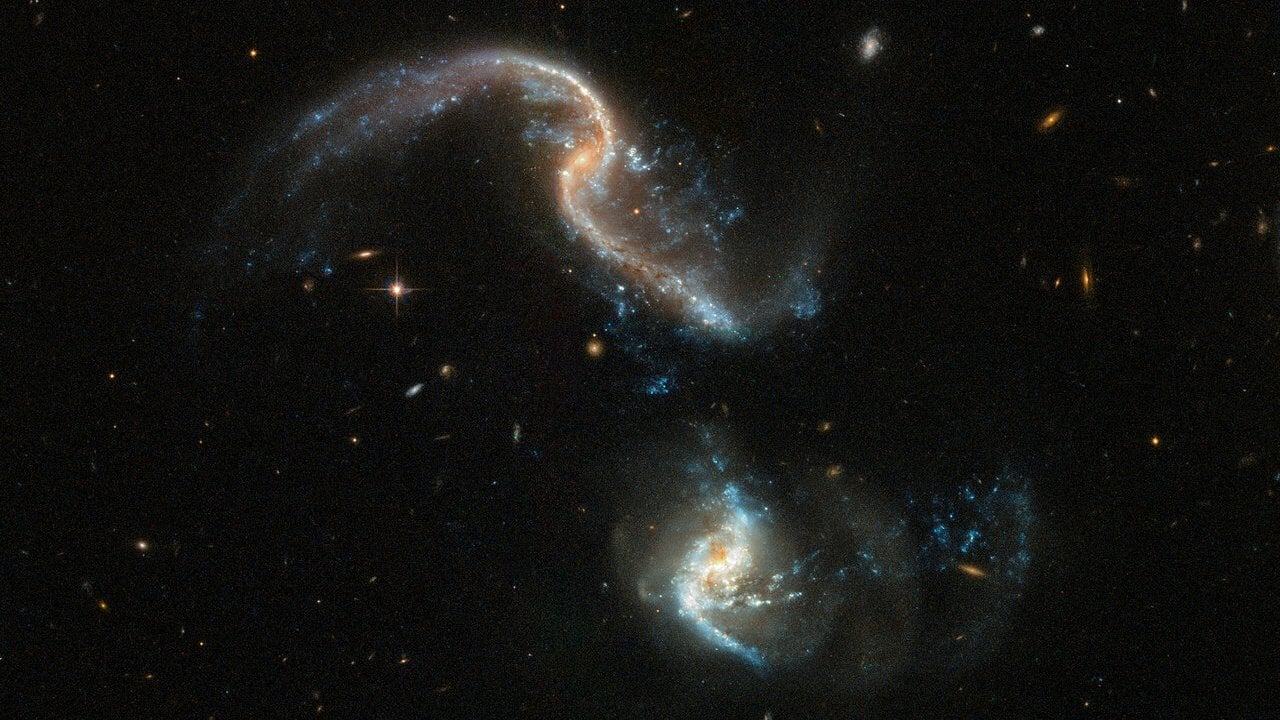
The telescope “Hubble” — a joint project of NASA and the European space Agency (ESA) located in low earth orbit for nearly 28 years. During this time the unit has experienced several breakdowns and repairs, has gone through several upgrades and, of course, gave us countless fantastic images of outer space. Recently ESA published a new “Hubble” images – a photo of two spiral galaxies, located 350 million light-years from us and is in the process of their merger.
Although the image shows that the nucleus of these galaxies is still at a sufficient distance from each other, the shape of both galaxies had already begun to deform under the action of powerful gravitational forces.
As indicated in the published ESA message, the galaxies in the picture is observed unusually long tidal tails are thin, elongated region of stars and interstellar gas that extends from galaxy into the surrounding space. The areas displayed in blue in the picture is a “stellar nursery” region, where the former is the formation of new stars.
The process of merging two cosmic bodies will take many millions of years. Actually the original shot of these two galaxies was published in 2008, however, the image above is the result of the operation of the camera Advanced Camera for Surveys (ACS) and Wide Field Camera 3 (WFC3) installed on the “Hubble”.
The Agency reports that about this merging pair of galaxies became known about 52 years ago, when scientists have tried to understand the unusual galactic phenomenon:
“A pair of 256 Arp was first cataloged by American astronomer Halton ARP in 1966 and, along with other 338 galaxies was in his “Atlas of peculiar galaxies” that illustrates the process of evolution, change, interaction and absorption galaxies. These peculiar galaxies cannot be attributed to a particular class in a sequence of Hubble. They are like a natural experiment on a cosmic scale, the observation of which allows scientists to better understand the physical processes causing spiral and elliptical galaxies to gain new forms.”
A galactic merger is an incredibly ambitious and powerful nature event that can change the appearance of the entire Universe. As indicated Space.com these phenomena for the current stage of evolution of the Universe are common. A similar fate in about 4 billion years awaits our milky Way galaxy, which will collide with its closest neighbor the Andromeda galaxy. However, thanks to the huge distances between stellar objects, the probability that our Sun will collide with a star from another galaxy, is extremely low. At the same time, there is a possibility that our Solar system could be pushed to somewhere closer to the outer limits of our galaxy or even thrown out. The site also adds that in such moments, the most dangerous place will be the surroundings merging supermassive black holes located in the centers of galaxies.
#photo of the day | the Hubble Telescope has captured two galaxies merging
Nikolai Khizhnyak